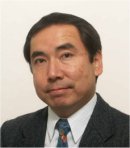|
||||||||||||||
|
Plenary
Lecture
Abstract: The transmission of voice on bones is
called bone conduction. When the voice waveforms are
transmitted from the voice source (vocal cord) through
the vocal tract wall and skull, they do not confront
directly with noise. This is the reason why the
bone-conducted speech signal is utilized to accomplish
speech communications in a very noisy environment.
Recently it was reported that bone-conducted speech
could be effectively used for speech recognition and
speaker recognition even in a negative decibel
signal-to-noise ratio environment. However, normally it
is known that the quality of bone-conducted speech is
comparatively lower than that of normal speech being
transmitted through air. This may be caused by the fact
that the frequency components more than 1[kHz]
deteriorate in bone-conducted speech. A straightforward
method to improve the quality of bone-conducted speech
is to emphasize the high frequency components. However,
this has been not accepted in current communication
systems. One of the reasons of this fact may be that the
phenomenon of bone conduction is speaker dependent.
Thus, in this plenary speech, as a speaker-dependent
technique, the use of an air- and bone-conduction
integrated microphone is mainly discussed. Also, it is
presented that the quality of bone-conducted speech can
be improved by utilizing both long-term spectra of the
normal and bone-conducted speech signals. On the other
hand, it is set out to design a reconstruction filter
for the speaker only from the bone-conducted speech.
This is a hot topic in the field of bone conducted
speech. The goal of this kind of research is to
accomplish a smooth speech communication in highly noisy
environments.
|
|
|||||||||||||
|
|
|
|
||||||||||||
| copyright - designed by WSEAS | ||||||||||||||
